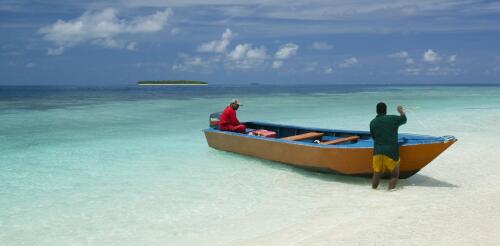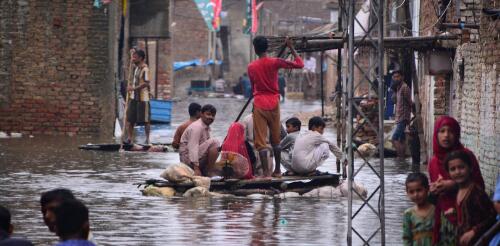UN Climate Change Conference
The world could still, theoretically, meet its goal of keeping global warming under 1.5 degrees Celsius, a level many scientists consider a dangerous threshold. Realistically, that’s unlikely to happen. Part of the problem was evident at COP27, the United Nations climate conference in Egypt. While nations’ climate negotiators were successfully fighting to “keep 1.5 alive” as the global goal in the official agreement, reached Nov. 20, 2022, some of their countries were negotiating new fossil fuel deals, driven in part by the global energy crisis. Any expansion of fossil fuels – the primary driver of climate change – makes keeping warming under 1.5 C (2.7 Fahrenheit) compared to pre-industrial times much harder. Attempts at the climate talks to get all countries to agree to phase out coal, oil, natural gas and all fossil fuel subsidies failed. And countries have done little to strengthen their commitments to cut greenhouse gas emissions in the...
Brazil’s president-elect, Luiz Inácio Lula da Silva, was greeted with applause and cheers when he addressed the U.N. climate conference in Sharm el-Sheikh, Egypt, on Nov. 16, 2022. As he had in his campaign, Lula pledged to stop rampant deforestation in the Amazon, which his predecessor, Jair Bolsanaro, had encouraged. Forests play a critical role in slowing climate change by taking up carbon dioxide, and the Amazon rainforest absorbs one-fourth of the CO2 absorbed by all the land on Earth. These articles from The Conversation’s archive examine stresses on the Amazon and the Indigenous groups who live there. 1. Massive losses The Amazon rainforest is vast, covering some 2.3 million square miles (6 million square kilometers). It extends over eight countries, with about 60% of it in Brazil. And the destruction occurring there is also enormous. From 2010 to 2019, the Amazon lost 24,000 square miles (62,000 square kilometers) of forest – the equivalent of...
Barbados Prime Minister Mia Amor Mottley spoke passionately to the United Nations General Assembly in September about the mounting debt many developing countries are shouldering and its increasing impact on their ability to thrive. The average debt for low- and middle-income countries, excluding China, reached 42% of their gross national income in 2020, up from 26% in 2011. For countries in Latin America and the Caribbean, the annual payments just to service that debt averaged 30% of their total exports. At the same time, these countries are facing a “triple crisis of climate change, of pandemic and indeed now the conflict that is leading to the inflationary pressures that lead regrettably to people taking circumstances into their own hands,” Mottley said. Rising borrowing costs coupled with high inflation and slow economic growth have left developing countries like hers in a difficult position when it comes to climate change. High debt payments mean countries have...
You may be hearing the phrase “loss and damage” in the coming weeks as government leaders meet in Egypt for the 2022 U.N. Climate Change Conference. It refers to the costs, both economic and physical, that developing countries are facing from climate change impacts. Many of the world’s most climate-vulnerable countries have done little to cause climate change, yet they are experiencing extreme heat waves, floods and other climate-related disasters. They want wealthier nations – historically the biggest sources of greenhouse gas emissions – to pay for the harm. A powerful example is Pakistan, where extreme rainfall on the heels of a glacier-melting heat wave flooded nearly one-third of the country in the summer of 2022. The flooding turned Pakistan’s farm fields into miles-wide lakes that stranded communities for weeks. More than 1,700 people died, millions lost their homes and livelihoods, and more than 4 million acres of crops and orchards,...



